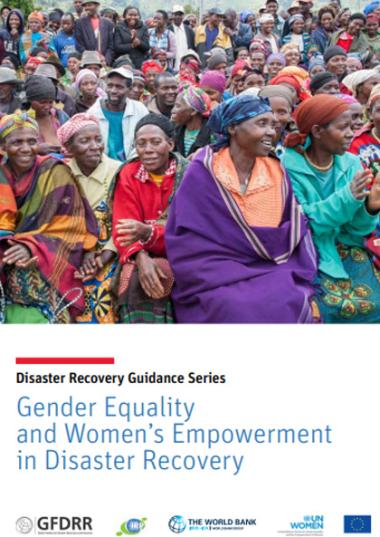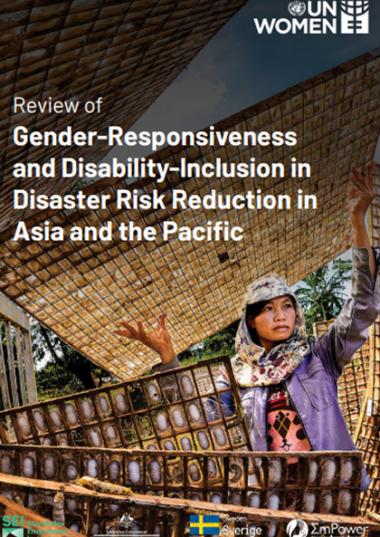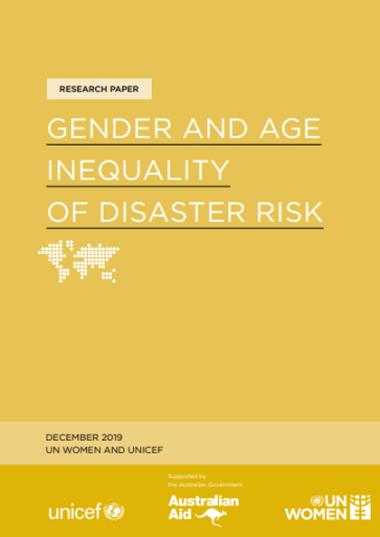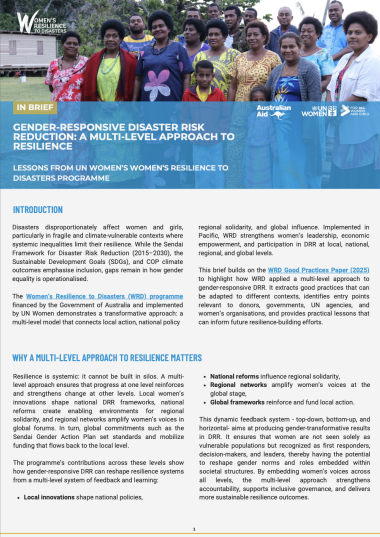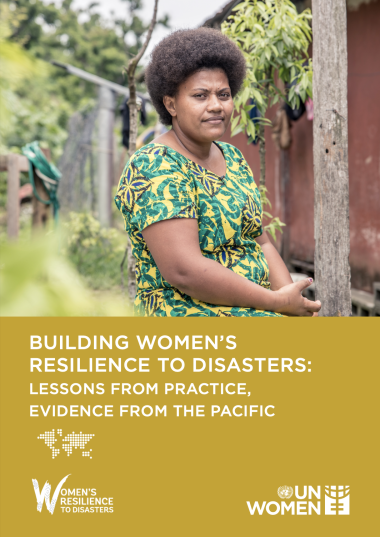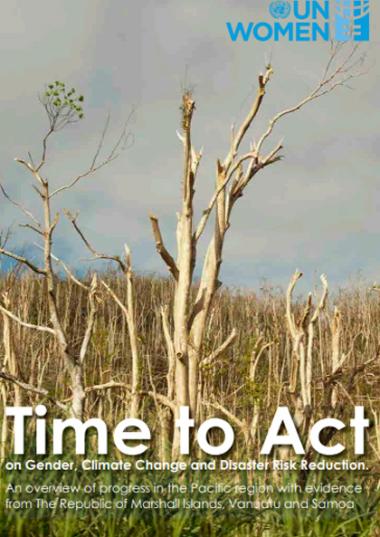
Integrating gender into humanitarian action: Good practices from Asia-Pacific (4)
May 2017
This is the fourth compilation of good practices on integrating gender into humanitarian action in Asia-Pacific, developed on behalf of the IASC Regional Network Working Group on Gender in Humanitarian Action in Asia-Pacific.
Women’s Leadership in Humanitarian Action Gender inequalities constrain the influence and control that women and girls have over their own lives. Disasters and crises tend to exacerbate pre-existing gender-based discrimination, inequalities, and violence. As a consequence, women and girls are disproportionally impacted before, during, and after disasters. However, in the Asia Pacific region, evidence has shown that women and girls are among the first responders to a crisis and play crucial roles in building the resilience of families and communities.
When women are meaningfully engaged and their needs are directly addressed, the following happens:
- Humanitarian action is more effective and efficient;
- Transition to recovery is accelerated; and
- Community-wide resilience is enhanced.
Therefore, it is vital to invest in women’s and girls’ capacity development and leadership potential and to ensure access to resources and information for women to lead and play a stronger role in humanitarian actions. Local women’s groups and networks are the most knowledgeable stakeholders of the specific needs and issues for women in disaster-prone and affected areas. If given the opportunities, resources, and decision-making space to influence humanitarian action, women’s organizations and networks are able to develop local solutions and responses by consulting and engaging with women and girls to promote their leadership roles.
